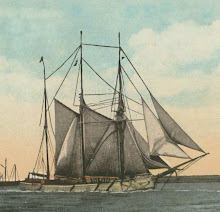Because of the large size of the watershed, physical characteristics such as climate, soils and topography vary across the basin. To the north, the climate is cold and the terrain is dominated by a granite bedrock called the Canadian (or Laurentian) Shield. (Precambrian rocks under a generally thin layer of acidic soils). Conifers dominate the northern forests.
In the southern areas of the basin, the climate is much warmer. The soils are deeper with layers or mixtures of clays, silts, sands, gravels and boulders deposited as glacial drift or as glacial lake and river sediments. The lands are usually fertile and can be readily drained for agriculture. Much of the original deciduous forests have given way to agriculture and sprawling urban development.
Although part of a single system, each lake is different. In volume, Lake Superior is the largest. It is also the deepest and coldest of the five. Superior could contain all the other Great Lakes and three more of Lake Erie. It is situated not far from the centre of the continent of North America.Its greatest length is from east to west, about 355 miles, and its greatest breadth is about 160 miles.It is interesting to note that in Minnesota one of the branches of the Mississippi River approaches to within twenty miles of the western extremity of Lake Superior, and a small lake near the head of the Albany River, which flows into Hudson's Bay, is only four miles from a bay on the northern shore. Because of this short distance to portage it was used by the Hudson's Bay Company to transport goods north.
The country around Lake Superior is bold and hilly, with the exception of the peninsula between it and Lake Michigan, but few of the hills rise above 1000 feet. On the southern shore are the Pictured Rocks. These rocks are gray and red sandstone, from 100 to 200 feet high, in many places presenting fantastic figures, and marked by numerous stripes of Yellow and red.
The around this lake are very old, being mostly Laurentian and Huronian. The Huronian rocks are composed of conglomerates, green stone, shale, quartz-ite and limestone. For this reason there are vast deposits of useful minerals for which this region is noted. The minerals are principally copper and iron ore on the south side of the lake.
Lake Michigan, the second largest, is the only Great Lake entirely within the United States. It is 320 miles long and 70 miles in mean width. I t receives the waters of numerous rivers and is connected by a canal with the Mississippi River. Lake Michigan is among the most urbanized areas in the Great Lakes system. It contains the Chicago, Milwaukee and Grand Haven metropolitan areas. Its dangerous shores are lighted by a large number of lighthouses.This region is home to about 8 million people or about one-fifth of the total population of the Great Lakes basin.
Lake Huron, at its northern extremity receives the waters from Lake Superior through the Sault Ste. Marie, and also those of Lake Michigan through the Straits of Mackinac. At the southern extremity its waters flow out through the St. Clair river, Lake St. Clair and the Detroit river into Lake Erie. Georgian Bay is separated from Lake Huron by the peninsula of Cabot's Head on the south and by the Manitoulin islands on the north, and north of these islands is Manitou bay, or the North channel. The entire width of Lake Huron, including Georgian Bay, is about 190 miles, and its length is about 250 miles. It is the third largest of the lakes by volume. The principal streams from Michigan, which flow into Lake Huron are the Thunder Bay river, the Au Sable and the Saginaw, and, from Ontario, the French, the Muskoka, the Severn and the Nottawasaga, all flowing into Georgian Bay, and the Saugeen, the Maitland and the Au Sable. Many Canadians and Americans own cottages on the shallow, sandy beaches of Huron and along the rocky shores of Georgian Bay.
Lake Erie is the smallest and is the most southern of the five Great Lakes. At its southwest extremity it receives the waters of the three upper lakes, Superior, Huron and Michigan through the Detroit river, and at its northeast extremity it discharges its waters by the Niagara river into Lake Ontario. It is exposed to the greatest effects from urbanization and agriculture. Because of the fertile soils surrounding the lake, the area is intensively farmed. Seventeen metropolitan areas with populations over 50,000 are located within the Lake Erie basin. Although the area of the lake is about 26,000 km2 (10,000 square miles), the average depth is only about 19 metres (62 feet). It is the shallowest of the five lakes and therefore warms rapidly in the spring and summer, and frequently freezes over in winter.
Lake Ontario, the lowest and the smallest of the five Great Lakes, lies between New York and Canada. The name, Ontario, in the Indian language, means beautiful. The lake is about 180 miles long from east to west, and its average breadth is about 35 miles. Although slightly smaller in area, is much deeper than its upstream neighbor, Lake Erie, with an average depth of 86 metres (283 feet).


No comments:
Post a Comment